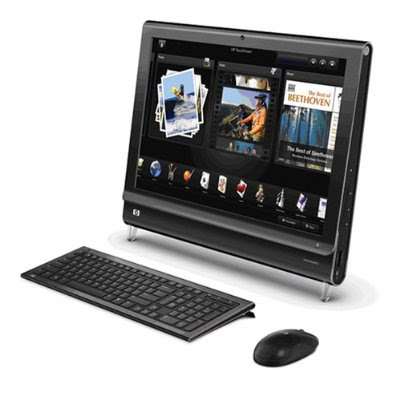Nexsan Technologies Inc., a storage system provider, announced at the company's NexStep EMEA VAR conference that it has doubled the capacity of the SATABeast storage system from 42 TB (terabytes) to 84 TB in four units (4U) of rack space.
Built to provide ideal power and space efficiency, along with meaningful cost efficiency, the SATABeast enables midsized organizations to achieve both exceptional capital and operational cost savings. The highly efficient SATABeast is ideal for data intensive storage applications that require 24x7 online data access.
The Nexsan SATABeast is an enterprise-class RAID (redundant array of independent disks) system designed to deliver performance, reliability and simplified operation in a very dense storage footprint. With a customer reported system reliability rating of more than 99.9 percent, the high density SATABeast is an option for both primary and secondary storage applications, including content archiving, disaster recovery and disk-based backup.
The system's chassis design reduces hard drive stress with anti-accumulative rotational vibration and horizontal midplane cooling technology supporting one of the lowest storage system maintenance rates. As with the company's storage systems, the Nexsan SATABeast features AutoMAID (Automatic Massive Array of Idle Disks) technology for policy-based power management that cuts energy demands up to 70 percent without impacting storage performance.
"Midsize organizations are challenged with continued data growth and seek solutions that not only reduce upfront costs but also lower day-to-day operating expenses. They want to use systems that provide greater power, space and cost efficiencies to drive down their total costs of ownership," said Mark Peters, senior analyst for the Enterprise Strategy Group. "Nexsan's latest generation of products, including the enhanced SATABeast, reflects the company's steadfast commitment to deliver such improvements; with capabilities that will help their customers to save money -- and their partners to compete -- in today's challenging economy and beyond."
The features of the enhanced SATABeast include up to 84 TB of native capacity in 4U, power efficient AutoMAID technology for reduced power consumption, dual-function Fibre Channel and iSCSI connectivity with wire-speed performance. It also offers flexible, scalable and completely OS independent storage system for supporting a range of storage infrastructures, support for RAID 0, 1, 1+0, 4, 5 and 6, and Worldview single GUI interface for simplified management.
"Customers are seeking solutions that achieve capital and operational savings and the enhanced SATABeast is specifically designed to deliver these benefits with power efficient, space efficient and cost efficient technologies," said Bob Woolery, Senior Vice President, Marketing for Nexsan. "We invite customers to unleash the capacity and power of the SATABeast for their data intensive applications and benefit from technology that is proven in thousands of deployments worldwide."
The Nexsan SATABeast is available through the company's worldwide channel network. Pricing for a fully populated SATABeast with 2 TB drives starts at $38,000, and scales based on configuration options.


 principal target of the malware are corporate Windows servers that have not been patched properly with the latest security updates.The anti-virus and software security company said that an estimate 8.9 million machines were infected with the virus, but other security experts estimate that the number could be much higher than that. A senior technology consultant with anti-virus company Sophos, said in an interview, with UK's BBC news that (he outbreak was "of a scale they had not seen for some time."Microsoft said that the malware has already infected many computers across the world, with machines in China, Brazil, Russia and India having the most number of victims. The worm is believed to be capable of cracking computers with weak passwords, but is able to infect computers through memory sticks without needing to break any password protection.It infects machines by searching for "services.exe," a core Windows file, and attaching itself to that file. After creating a DLL library file with a random name, it runs itself as a service on the machine, creates a web server and downloads files from the hacker's web site. While most malware download from a limited number of hacker websites, Conficker, according to F-Secure, generates hundreds of domain names a day, making it hard to track down the site used to download the hackers' files and shut it down.
principal target of the malware are corporate Windows servers that have not been patched properly with the latest security updates.The anti-virus and software security company said that an estimate 8.9 million machines were infected with the virus, but other security experts estimate that the number could be much higher than that. A senior technology consultant with anti-virus company Sophos, said in an interview, with UK's BBC news that (he outbreak was "of a scale they had not seen for some time."Microsoft said that the malware has already infected many computers across the world, with machines in China, Brazil, Russia and India having the most number of victims. The worm is believed to be capable of cracking computers with weak passwords, but is able to infect computers through memory sticks without needing to break any password protection.It infects machines by searching for "services.exe," a core Windows file, and attaching itself to that file. After creating a DLL library file with a random name, it runs itself as a service on the machine, creates a web server and downloads files from the hacker's web site. While most malware download from a limited number of hacker websites, Conficker, according to F-Secure, generates hundreds of domain names a day, making it hard to track down the site used to download the hackers' files and shut it down.

 without having to download them to your mobile phone or having them clog up the recipient's inbox.' Recipients can view the files stored on users PCs and choose to download them directly to their own PCs.
without having to download them to your mobile phone or having them clog up the recipient's inbox.' Recipients can view the files stored on users PCs and choose to download them directly to their own PCs.






